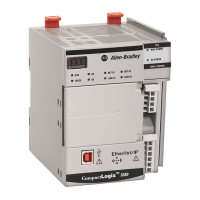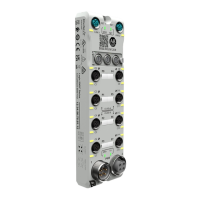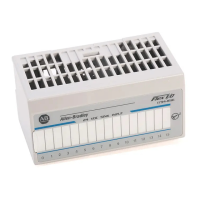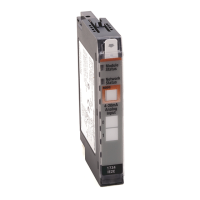26 Rockwell Automation Publication 5094-UM001E-EN-P - April 2020
Chapter 1 Digital I/O Module Operation in a Logix 5000 Control System
Configuration via Logix
Designer Application
You must create a Logix Designer application project for the Logix 5000
controller that owns the FLEX 5000 standard and safety I/O modules. The
project includes module configuration data for the FLEX 5000 I/O modules.
The Logix Designer application transfers the project to the owner-controller
during the program download. Data is then transferred to the FLEX 5000 I/O
modules over the EtherNet/IP network.
The FLEX 5000 I/O modules can operate immediately after receiving the
configuration data.
Connections for Standard
I/O Modules
During module configuration, you must define the module. Among the Module
Definition parameters, you must choose a connection type for the module. A
connection is a real-time data transfer link between the owner-controller and the
module that occupies the slot that the configuration references.
When you download module configuration to a controller, the controller
attempts to establish a connection to each module in the configuration.
Because part of module configuration includes a slot in the FLEX 5000 I/O
system, the owner-controller checks for the presence of a module there. If a
module is detected, the owner-controller sends the configuration. One of the
following occurs:
• If the configuration is appropriate to the module detected, a connection is
made and operation begins.
• If the configuration is not appropriate to the module detected, the data is
rejected and the Logix Designer application indicates that an error
occurred.
The configuration can be inappropriate for many reasons. For example, a
mismatch in electronic keying that helps prevents normal operation.
The owner-controller monitors its connection with a module. Any break in the
connection, for example, the loss of power to the FLEX 5000 I/O system, causes
a fault. The Logix Designer application monitors the fault status tags to indicate
when a fault occurs on a module.
Requested Packet Interval
The Requested Packet Interval (RPI) is a configurable parameter that defines a
rate at which the owner-controller and the module exchange data. You set the
RPI value during initial module configuration and can adjust it as necessary after
module operation has begun. The valid RPI values for FLEX 5000 standard I/O
modules are 0.2…750 ms.
STATUS
POWER
DIGITAL 16 INPUT 24 VDC
5094-IB16
1
1
TB3
FLEX 5000
TM
I/O
0 1 2 3 4 5 6 7 8 9 10 11 12 13 14 15
STATUS
POWER
DIGITAL 16 INPUT 24 VDC
5094-IB16
1
1
TB3
FLEX 5000
TM
I/O
0 1 2 3 4 5 6 7 8 9 10 11 12 13 14 15
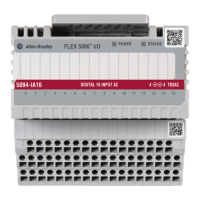
